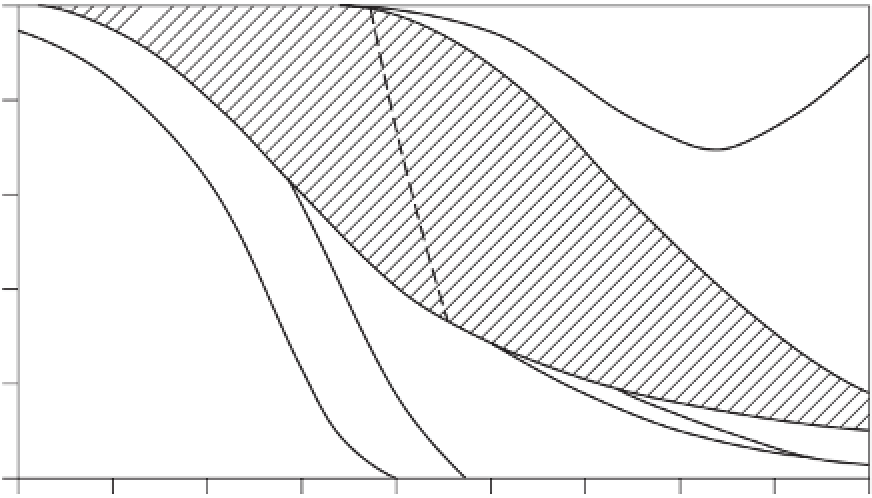Geology Reference
In-Depth Information
100
Quartz
(Calcium-rich)
80
60
Olivine
(Orthoclase)
40
(Sodium-rich)
20
Amphibole
Muscovite
Biotite
0
40
50
60
70
80
Silica content (%)
ULTRABASIC
BASIC
INTERMEDIATE
ACID
EXTRUSIVE
Fine-grained
Rhyolite
Obsidian
(rare)
Basalt
Andesite
Trachyte
INTRUSIVE
Medium-grained
(rare)
Dolerite
Microdiorite
Microsyenite
Microgranite
INTRUSIVE
Coarse-grained
Peridotite
Gabbro
Diorite
Syenite
Granite
Figure 2.1
Igneous rocks and their component minerals. The classification is based on the silica content, which
produces an ultrabasic-acid axis. The terms 'acid' and 'basic' are not meant to suggest that the rocks are acidic or
alkaline in the customary sense, but merely describe their silica content.
The surface phase, and particularly the land-surface
phase, of the rock cycle is the domain of geomorphol-
ogists. The flux of materials across the land surface is,
overall, unidirectional and is a cascade rather than a
cycle. The basics of the
land-surface debris cascade
are
as follows. Weathering agents move into the soil and rock
along a weathering front, and in doing so fresh rock is
brought into the system. Material may be added to the
land surface by deposition, having been borne by wind,
water, ice, or animals. All the materials in the system
are subject to transformations by the complex processes
of weathering. Some weathering products revert to a
rock-like state by further transformations: under the right
conditions, some chemicals precipitate out from solution
to form hardpans and crusts. And many organisms pro-
duce resistant organic and inorganic materials to shield
or to support their bodies. The weathered mantle may
remain in place or it may move downhill. It may creep,
slide, slump, or flow downhill under the influence of
gravity (mass movements), or moving water may be wash
or carry it downhill. In addition, the wind may erode it
and take it elsewhere.




















